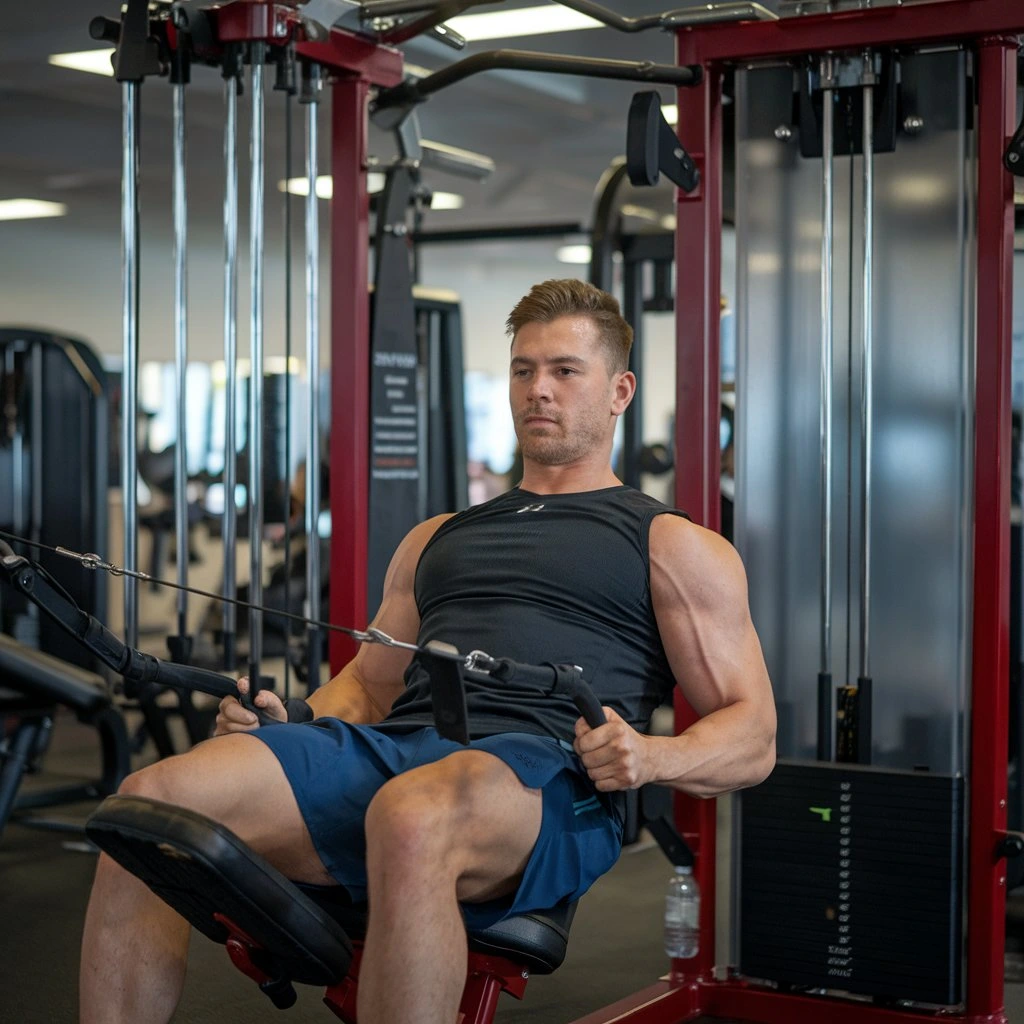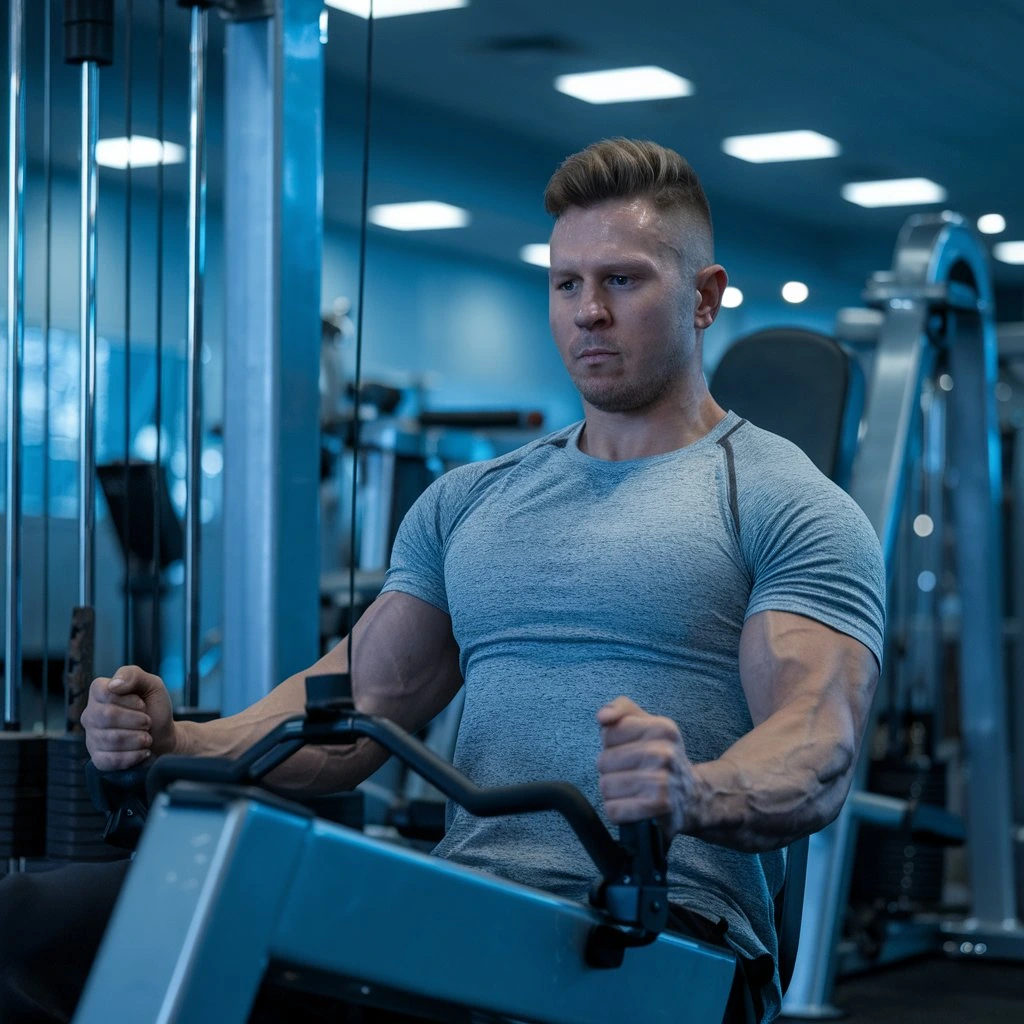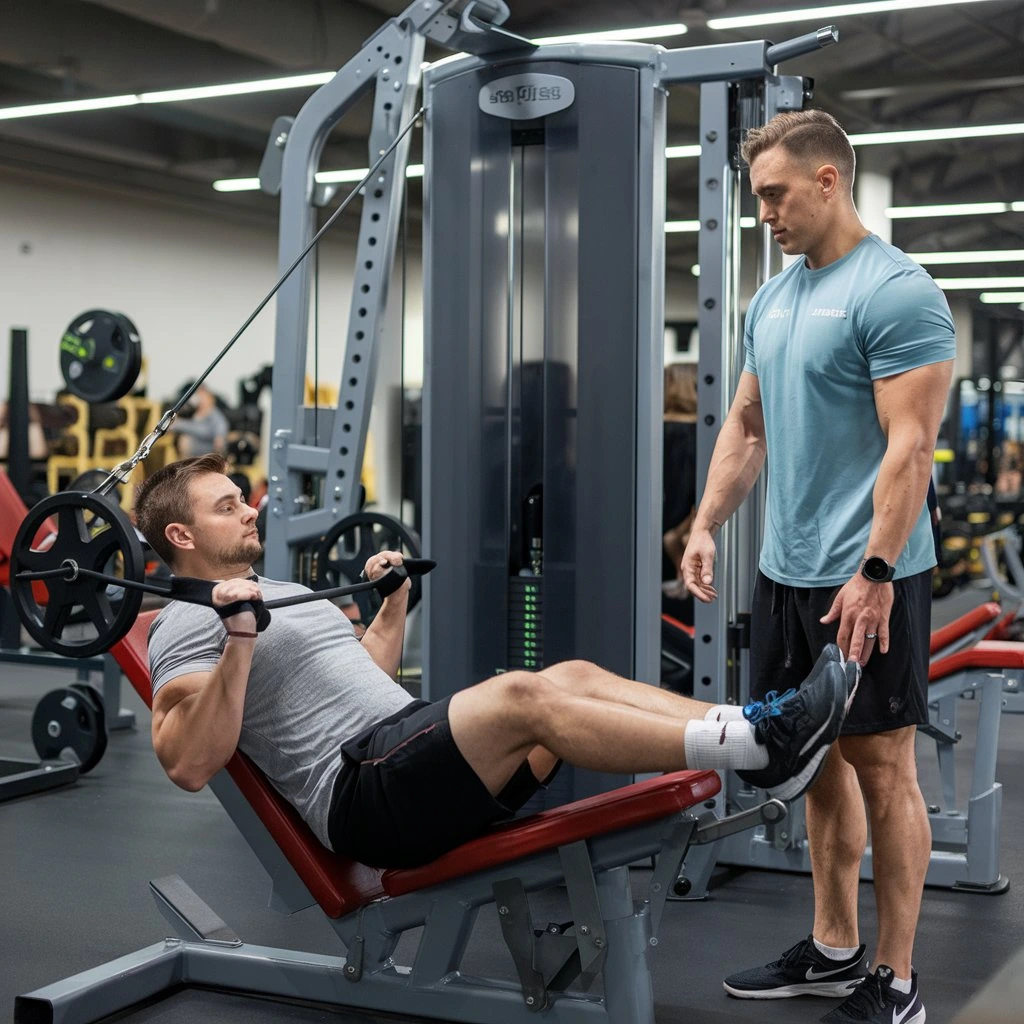A cable leg press machine is a piece of gym equipment designed for working out your leg muscles. It’s like a chair where you sit and push against resistance using your legs. Instead of weights stacked on a bar, it uses a system of cables and pulleys to create resistance. This makes it safer and more versatile than traditional leg press machines.
Purpose and Benefits
A cable leg press machine’s main purpose is to strengthen your leg muscles. These include your thighs, calves, and glutes. By pushing against the resistance, you can build muscle strength and tone your legs. It also improves your lower body strength. This can help with everyday activities like walking, climbing stairs, or playing sports.

One benefit of using a cable leg press machine is that it’s adjustable. You can easily change the weight you’re lifting by adjusting the resistance. This makes it good for people of different fitness levels. It suits beginners and advanced athletes. Plus, it uses cables not weights. This makes it less intimidating for beginners and reduces injury risk.
Another advantage is that it allows for more motion. This is compared to traditional leg press machines. This means you can work your muscles more thoroughly and target different areas of your legs. Also, you sit while using it. Maintaining appropriate forms becomes easier as a result. This reduces strain on your joints and lower back.
Description of Cable Leg Press Machine
Structure and Components
The Cable Leg Press Machine looks like a big chair with a platform where you put your feet. It’s made of strong metal and has a seat and backrest to sit on comfortably. There are handles on the sides for you to hold onto while using it. Underneath, there are cables and pulleys connected to weights for resistance.
Functionality and Mechanics
When you sit on the machine, you can adjust the seat and backrest to fit your body. Then, you place your feet on the platform in front of you. To use it, you push the platform with your feet. Cables connected to weights provide resistance. This helps to work out your leg muscles, like your thighs and calves. The pulley system makes sure the weight you’re pushing against stays steady and safe. It’s a great way to strengthen your legs and improve your overall fitness.
How to Use a Cable Leg Press Machine
Adjusting the Settings
- Start by adjusting the weight of the machine. Most cable leg press machines have a weight stack with different plates. Select a weight based on your degree of strength.
- Next, adjust the seat position. Make sure it’s comfortable and allows your knees to bend at a 90-degree angle when you’re seated.
- Check the footplate position. The footplate should be set at a height. Your feet should be able to reach it without overextending.
Proper Body Positioning
- With your feet flat on the footplate and your back flat on the backrest, take a seat on the machine.
- Grip the handles or bars provided on the machine for stability.
- Keep your knees aligned with your toes and avoid letting them cave inwards or splay outwards.
Execution of Exercises
- Stretch your legs to push the footplate away from your body. But, do not lock your knees at the top.
- Slowly lower the footplate back down by bending your knees until they reach a 90-degree angle.
- Repeat the movement the number of times indicated.
- Remember to breathe steadily. Exhale as you push the weight away. Inhale as you bring it back.
Muscles Targeted
Primary Muscles Engaged
The cable leg press machine mainly targets your quadriceps. Those are the big muscles at the front of your thighs. These muscles are crucial. They are key for movements like standing up from a chair or walking up stairs. When you push against the machine’s resistance, your quads work hard. They do this to extend your knees and straighten your legs.
Secondary Muscles Involved
In addition to your quadriceps, the cable leg press also works other muscles in your lower body. Your glutes, or buttocks muscles, play a supporting role in this exercise. They help stabilize your hips and pelvis as you push the weight away. Your hamstrings, located at the back of your thighs, also get some action. They help your quads extend your knees. They also provide balance. Finally, your calves are also engaged. They help stabilize your ankles.
Advantages of Cable Leg Press Machine
- Versatility: This machine allows you to do a bunch of different exercises. You’re not just stuck with one move. You can target different muscles and change up your workout routine.
- Adjustability: You can change the amount of weight you’re pushing with ease. So, whether you’re just starting or you’re a seasoned pro, you can find the right weight for you.
- Safety: Cable leg press machines usually have safety features built-in. This means you can focus on your workout without worrying about getting hurt.
- Stability: When you push against the cables, you use your muscles to steady yourself. Over time, this serves to enhance your coordination and balance.
- Isolation: With this machine, you can focus on specific muscles in your legs. So, if you want to target your quads or hamstrings, you can do that alone. Other muscles won’t join in and steal the show.
- Less strain on your back: It’s easier on your back. In traditional leg press machines, you lie down. But, with cable leg press machines, you’re more upright. This can be better for your back, especially if you have any issues or concerns in that area.
- Space-saving: Cable leg press machines are space-saving. They are more compact than other leg press machines. So if you’re short on space at home or in the gym, this could be a great option for you.
Limitations and Considerations
An excellent piece of equipment for the gym is the cable leg press machine. But, it’s important to know its limits and concerns before using it.
First, remember that the cable leg press machine can strengthen your leg muscles. But, it might not provide as much resistance as traditional leg press machines. This means that if you aim to build muscle, you might want to add other exercises or equipment to your routine.

Also, using the cable leg press machine requires proper form. This is to avoid injury. You’re working with cables and pulleys. It’s easy to strain your muscles or stress your joints if you’re not careful. Start with lighter weights. Increase them as you get more comfortable with the machine.
Additionally, the cable leg press machine might not be right for everyone. This is especially true for those with knee or back issues. If you have concerns about this machine, ask a fitness pro or physical therapist. They can tell if it’s right for you. Do this before adding it to your workout routine.
Lastly, like any gym equipment, the cable leg press machine needs regular maintenance. This is to make sure it works well and safely. Make sure you adhere to any manufacturer-recommended maintenance procedures. Report any issues or malfunctions to gym staff quickly.
Keep these limits in mind. Also, think about these points. They will help you get the most from your workouts with the cable leg press machine. It is safe to use and functions nicely.
Alternatives and Complementary Exercises
Traditional Leg Press Machine
This machine is like a sled that you push with your legs. If you don’t have access to one, you can try these alternatives:
- Dumbbell or Barbell Squats: Hold a dumbbell in each hand or a barbell across your shoulders. Squat down, then stand back up.
- Bulgarian Split Squats: Stand in front of a bench or sturdy surface. Step onto the bench with one foot behind you. After that, squat down with your other leg.
- Lunges: Take a single stride forward, then lower your body until your knees are 90 degrees bent.
Free Weight Exercises
These exercises use dumbbells or barbells. They work your legs without a machine.
- Goblet Squats: Hold a dumbbell vertically close to your chest and squat down, then stand back up.
- Barbell Deadlifts: With a barbell on the ground, bend at your hips and knees to lift it, then lower it back down.
- Dumbbell Step-Ups. Hold a dumbbell in each hand. Step onto a sturdy surface, and then step back down, alternating legs.
Bodyweight Exercises
You don’t need any equipment for these exercises, just your own body
- Bodyweight Squats: Do bodyweight squats. Stand with your feet shoulder-width apart. Squat down, then stand back up.
- Bulgarian Split Squats (without weights): Just like with weights, but without holding anything.
- Walking Lunges: Do a Walking Lunge by taking a big step forward with one leg. When both of your knees are bent, lower your body. Then, bring your back leg forward to step into the next lunge.
Conclusion
Summary of Key Points
The cable leg press machine is a piece of gym equipment designed to help people work out their leg muscles. It uses cables and weights to create resistance as you push against it with your legs. This machine offers a new way to exercise. It’s different from traditional leg presses. It allows for a wider range of motion and targets muscles in slightly different ways. It can be adjusted to fit different fitness levels and goals. This makes it versatile for various users.
Final Thoughts on the Utility of Cable Leg Press Machine
In conclusion, the cable leg press machine can be a valuable addition to any gym routine. It is versatile. It can target leg muscles in unique ways. This makes it useful for those looking to strengthen their lower body. It offers options for customization and progression. This is true whether you’re a beginner or an experienced athlete. To prevent injury, start with lighter weights. Use proper forms. Adding the cable leg press machine to your workouts can help you reach your fitness goals. It can also improve your leg strength over time.

